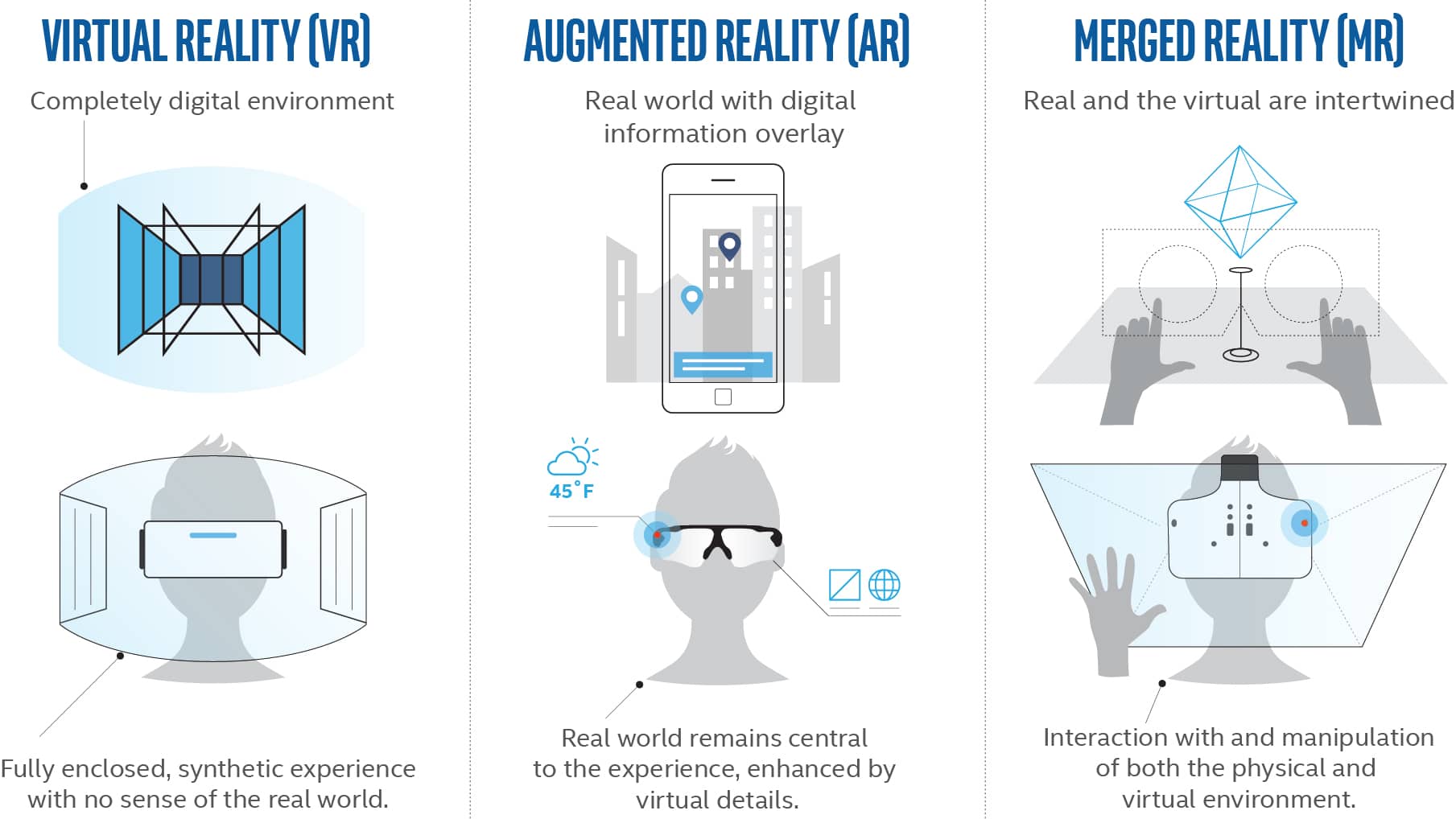| |
Extended Reality (XR) helping us to solve the current pandemic
Virtual, Augmented and Mixed Reality (VR/AR/MR) |
|
Extended Reality (XR) is the overarching term used for VR, AR and MR. VR (Virtual Reality) replaces reality with a completely new 3D digital environment., AR (Augmented reality) overlays digital content on top of the real world and MR (Mixed Reality) is the merging of real and virtual worlds to produce new environments and visualizations, where physical and digital objects co-exist and interact in real time. |
|
|
The terms VR, AR and MR cover technology that uses glasses or headsets to project computer-generated imagery directly into the user's field of vision. When it is superimposed over what the user is viewing in the real world, it is AR. And when it is used to place the user into an entirely computer-generated environment, it is VR.
Looking ahead to 2021, we can again expect to see Extended Reality (XR), in conjunction with the other technological trends to assist in tackling challenges posed by the current world situation, namely the current COVID 19 pandemic Largely this will involve allowing us to avoid potentially dangerous situations where there could be a risk of viral transmission. For example, medical examinations and diagnosis can increasingly be carried out remotely. A solution available to opticians allows eye tests to be carried out entirely in VR, as high-definition cameras give a clear image of the patient's eye. An AR tool then allows the customer to browse the range of glasses on offer and see what they look like on their own face without having to leave their home.
We will also see an increase in the use of VR and AR tools within education. This will reduce the need for us to work in crowded classroom conditions – if not totally, then at least in areas and during times when it is known that transmission rates are high.
And as more data on the conditions and manner in which viral transmission takes place becomes available, AR tools will be used to give out real-time warnings when we move through areas where the infection is known to have spread. Even simple steps like reminding us to wash our hands when we touch a door handle in a public space or issuing an alert when a device senses that we have touched our face without washing our hands, could help to save lives and stop us spreading illness around the real-word environments we inhabit and move through.
Virtual, augmented and mixed reality products have continued to receive high levels of funding and investment during the 2010 decade. There has also been immense hype over these products during the decade, with evangelists of the technology believing that it will be used in all aspects of day to day life.
|
|
|
|
|

 |
| History of the Industry |
| Over the past two decades, there have been big strides in the technological development of XR products. In the early 90's a number of headsets were released which allowed the user to view a video on a headset from an external device. Then in the next decade, devices such as the google glass explorer were released. These captured the imagination of many people, and it was one of the first "augmented reality" products available to consumers. Although this did not take off, it paved the way for other products to be developed. Later in the decade, more VR and AR products were released, for example in 2019, Magic Leap released its first product after years of funding. Oculus also released a VR headset which does not need to be connected to a computer – the Quest – proving that VR does not need to be tethered to a computer. |
|
|
|
|

 |
| What Are the Key Technologies? |
| A headset is made up of many component parts, including optics, displays, sensors and haptics. Each of these component parts must fit together seamlessly to create a completely immersive experience for the user. Within optics, waveguides are an important part of augmented and mixed reality displays, transmitting the image from the display to the user's eye. There are many different requirements which must be fulfilled, and although currently there are optical artifacts present in some headsets, it is likely in the future that these will be removed as the technology evolves and improves. |
|
|
|
|
|
|

